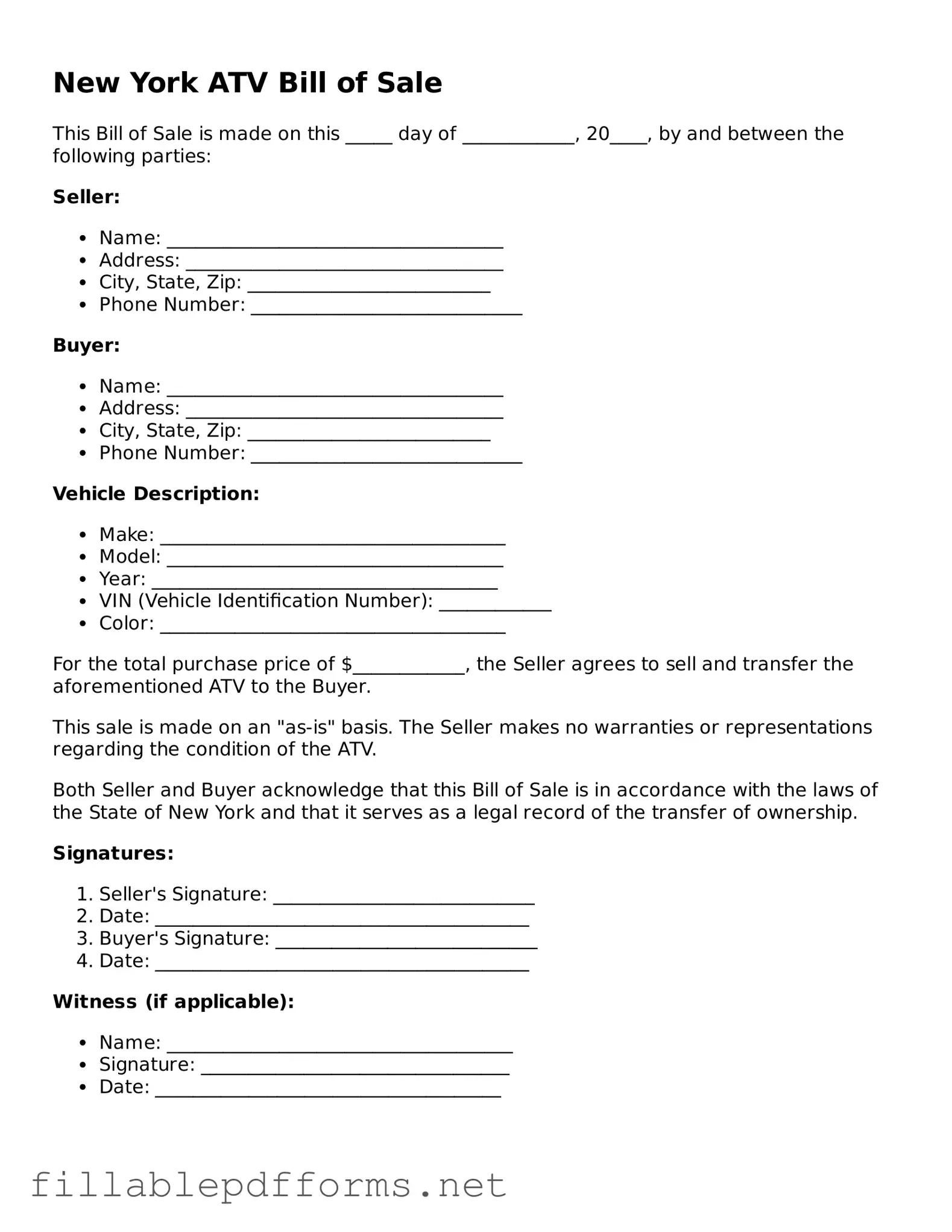Attorney-Verified ATV Bill of Sale Form for New York State
The New York ATV Bill of Sale form is a crucial document used to record the sale and transfer of ownership for all-terrain vehicles in New York State. This form serves as proof of the transaction, detailing essential information about the buyer, seller, and the ATV itself. Understanding its importance can help ensure a smooth and legal transfer of ownership.
Launch Editor Here
